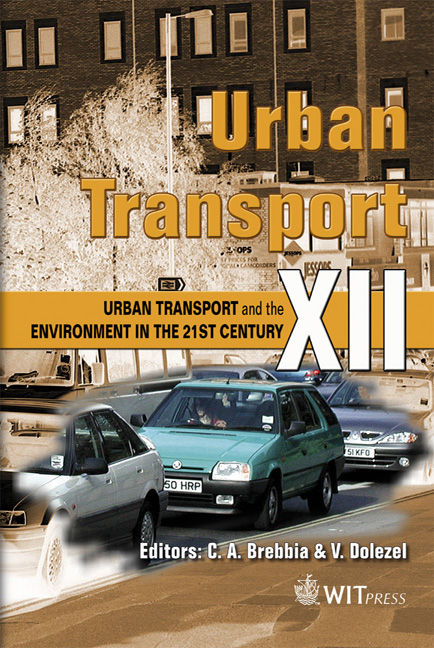Cellular Automata Simulation Of Traffic Flow Through A Road With A Construction Zone
Price
Free (open access)
Transaction
Volume
89
Pages
9
Published
2006
Size
371 kb
Paper DOI
10.2495/UT060271
Copyright
WIT Press
Author(s)
E. Kita, T. Tamaki & H. Shimizu
Abstract
In this paper, we discuss the cellular automata simulation of the traffic flow on a two-lane road with a construction zone. The simulation model is based on the cellular automata and the stochastic velocity model. In the stochastic velocity model, the vehicles are controlled with a uniform random number. A two-lane road with a construction zone is considered as the object domains and the simulation results are compared with the results of the one-lane and two-lane roads without a construction zone. Although it has been predicted from the analytical study that the traffic flow on a road with a construction zone depends only on the number of the available lanes, the simulation results shows that the traffic flow depends not only on the number of the available lanes but also the length of the construction zone. 1 Introduction The existing traffic simulation models can be briefly classified into the macroand micro-models [1, 2, 3]. In the macro-model, the traffic flow is considered as the liquid flow and, therefore represented with the constitutive equation. In the micro-model, the movement of each vehicle is simulated with a computer and the emergent phenomenon of driving vehicles shows the traffic flow. Since the computational cost of the macro-model is much lower than that of the micromodel, the macro-model simulation is often adopted for the large-scale traffic simulation in which a large number of vehicles are driving in a wide area. Tanahashi et al. have pointed out that it is very important to represent the different cartelistic feature of each vehicle for more accurate simulation of the traffic flow [3]. So, the authors have focused on the cellular automata model for the Urban Transport XII: Urban Transport and Cellular automata simulation of traffic flow E. Kita, T. Tamaki & H. Shimizu Graduate School of Information Sciences, Nagoya University, Nagoya, Japan Abstract In this paper, we discuss the cellular automata simulation of the traffic flow on a two-lane road with a construction zone. The simulation model is based on the cellular automata and the stochastic velocity model. In the stochastic velocity model, the vehicles are controlled with a uniform random number. A two-lane road with a construction zone is considered as the object domains and the simulation results are compared with the results of the one-lane and two-lane roads without a construction zone. Although it has been predicted from the analytical study that the traffic flow on a road with a construction zone depends only on the number of the available lanes, the simulation results shows that the traffic flow depends not only on the number of the available lanes but also the length of the construction zone. 1 Introduction The existing traffic simulation models can be briefly classified into the macroand micro-models [1, 2, 3]. In the macro-model, the traffic flow is considered as the liquid flow and, therefore represented with the constitutive equation. In the micro-model, the movement of each vehicle is simulated with a computer and the emergent phenomenon of driving vehicles shows the traffic flow. Since the computational cost of the macro-model is much lower than that of the micromodel, the macro-model simulation is often adopted for the large-scale traffic simulation in which a large number of vehicles are driving in a wide area. Tanahashi et al. have pointed out that it is very important to represent the different cartelistic feature of each vehicle for more accurate simulation of the traffic flow [3]. So, the authors have focused on the cellular automata model for the
Keywords





